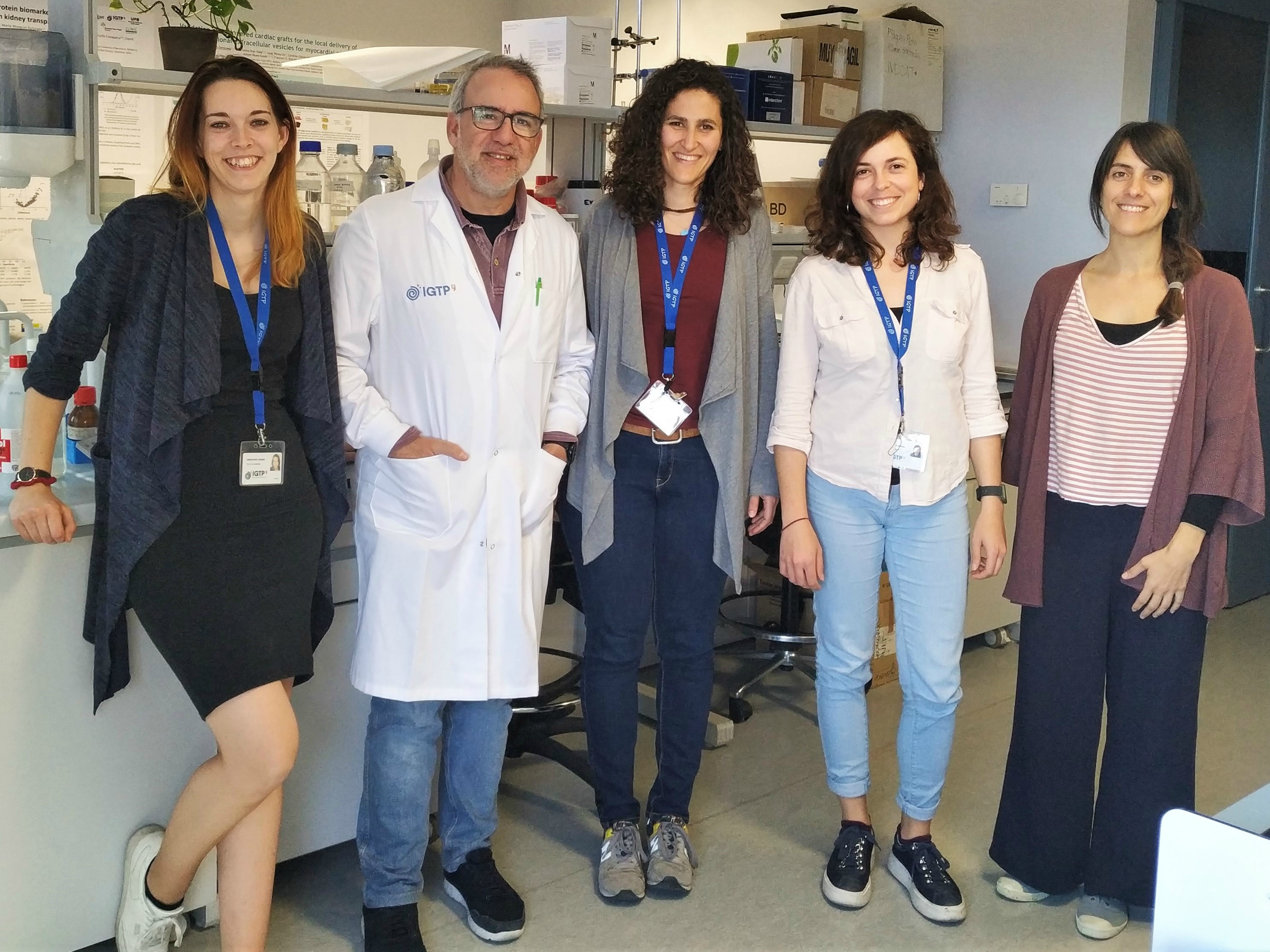Seeking a consensus for Extracellular Vesicle Isolation

This year the Innovation in Vesicles and Cells for Application in Therapy Group (IVECAT) has published a protocol for Size-Exclusion Chromatography for separating extracellular vesicles from different biological fluids and a review of the current techniques available.
The field of extracellular vesicle (EV) biology has expanded enormously in recent years; their use in diagnostics and prognostics for a wide range of diseases and their potential for delivering cell-free therapies means that a great deal of research is being carried out. The diversity of applications and the need to scale up laboratory production of EVs for possible therapies means that it is now critical to standardize techniques for separating them out of biological fluids.
Cells release extracellular vesicles (EVs) as means of cell communication, by sending a great variety of molecules including proteins, lipids, metabolites and nucleic acids from the cell of origin, packed in nanovesicles. These molecules can provide an enormous amount of information about the health of an individual and they can be extracted from many fluids such as in vitro-cultured cells, plasma, serum, saliva, breast milk, urine or others, so they are extremely attractive as a non-invasive way to diagnose many health problems.
The Innovation in Vesicles and Cells for Application in Therapy Group (IVECAT) led by Dr Francesc E. Borràs at the IGTP is a leader in the field of extracellular vesicles. The group is transversal, applying EV technology to investigate kidney diseases (within the Kidney-affecting Diseases Research Group - REMAR Group at IGTP), diagnosis of synucleinopathies (cerebral dementias, in collaboration with Dr Katrin Beyer of the Genomics and transcriptomics of synucleinopathies Group), and diagnosis and treatment of cardiomyopathies (in collaboration with the ICREC Group led by Dr Antoni Bayes-Genis). Earlier this year IVECAT published a protocol for isolating EVs from different biological fluids in Current Protocols and they have just published a review on the different techniques available in the journal Cellular and Molecular Life Sciences. Dr Marta Monguió-Tortajada, first author on both papers, explained the importance of this work to us, "As well as basic research work in the laboratory, more and more groups are looking at ways to use EVs for clinical diagnosis in patients as source of new biomarkers. It is also becoming clear that EVs could be a way to introduce cell-free therapies into the body in a safer more efficient way. This requires producing large quantities of EVs and purifying them with high standard of control. With all this work going on, there is no clear consensus on the best way to purify EVs, which is what we are trying to establish. Standardization of methodology is vital, not only to compare different studies but also to ensure safety for patients."
There are many different methods for isolating EVs from biological fluids, including different forms of ultracentrifugation, precipitation, separation by floatation, using antibodies or flow cytometry. "Every system has its drawbacks," Monguió-Tortajada tells us, "The ideal technique would be easy to operate and robustly reproducible, without expensive equipment, it should be cheap and produce EVs free from contaminants, such as proteins from the original liquid, or artefacts from the extraction process," she adds.
In this context, the group has refined the use of size-exclusion chromatography (SEC), a technique first described by Böing et al. in 2014 for EV isolation based on its nanometric size. It is becoming the most widely used method for many different bio-fluids in combination with appropriate pre-processing methods depending on the sample type. In general, SEC has technical advantages; it removes most of the plentiful soluble plasma proteins that can contaminate the purified vesicles, it is easy and fast to use and it can be scaled-up to increase the amount of EVs recovered. "At the moment it is the best candidate for standardizing techniques, it can easily be adapted to most laboratories and would speed up the consolidation of clinical applications," concludes Monguió-Tortajada. To know more about the details of all the techniques, we recommend you read the group's review paper.
Reference Papers:
Protocol
Monguió-Tortajada, M., Morón-Font, M., Gámez-Valero, A., Carreras-Planella, L., Borràs, F. E., & Franquesa, M. (2019). Extracellular-vesicle isolation from different biological fluids by size-exclusion chromatography. Current Protocols in Stem Cell Biology, e82. doi: 10.1002/cpsc.82
Review:
Monguió-Tortajada M, Gálvez-Montón C, Bayes-Genis A, Roura S*, Borràs FE* (2019) Extracellular vesicle isolation methods: rising impact of size-exclusion chromatography. Cell Mol Life Sci 1-14. https://doi.org/10.1007/s00018-019-03071-y
